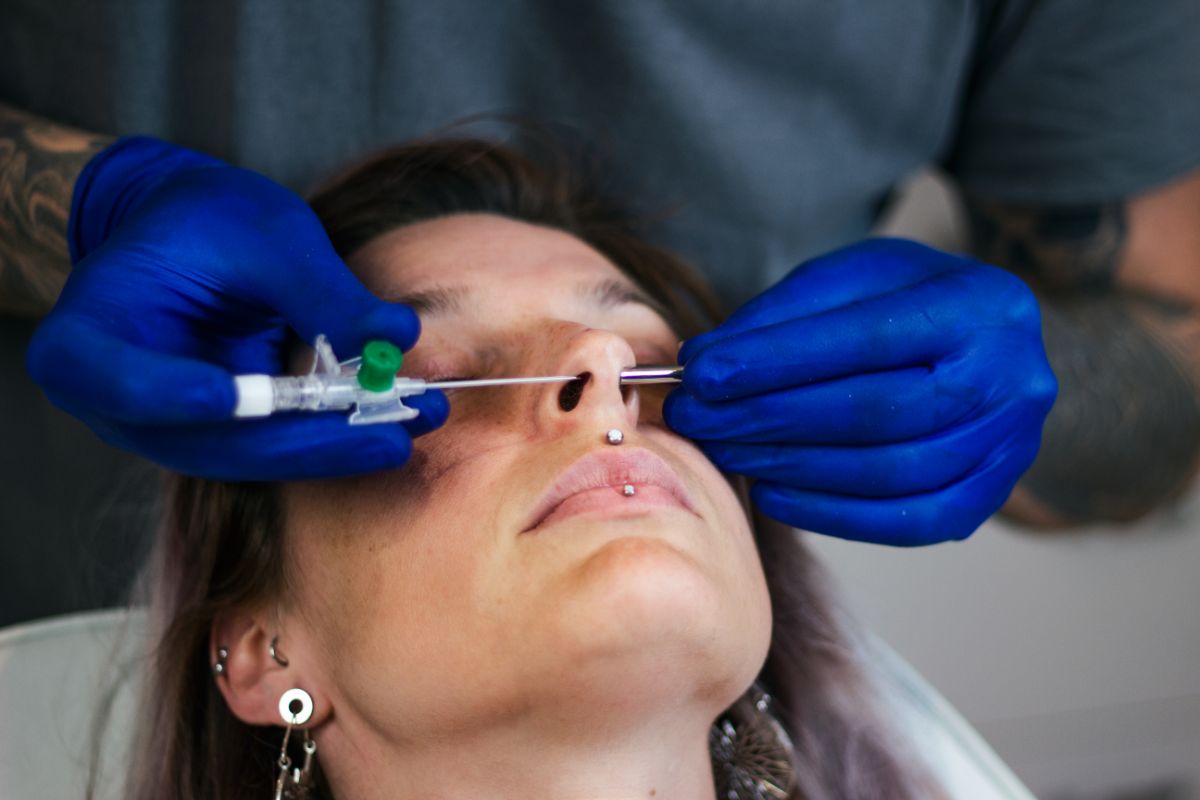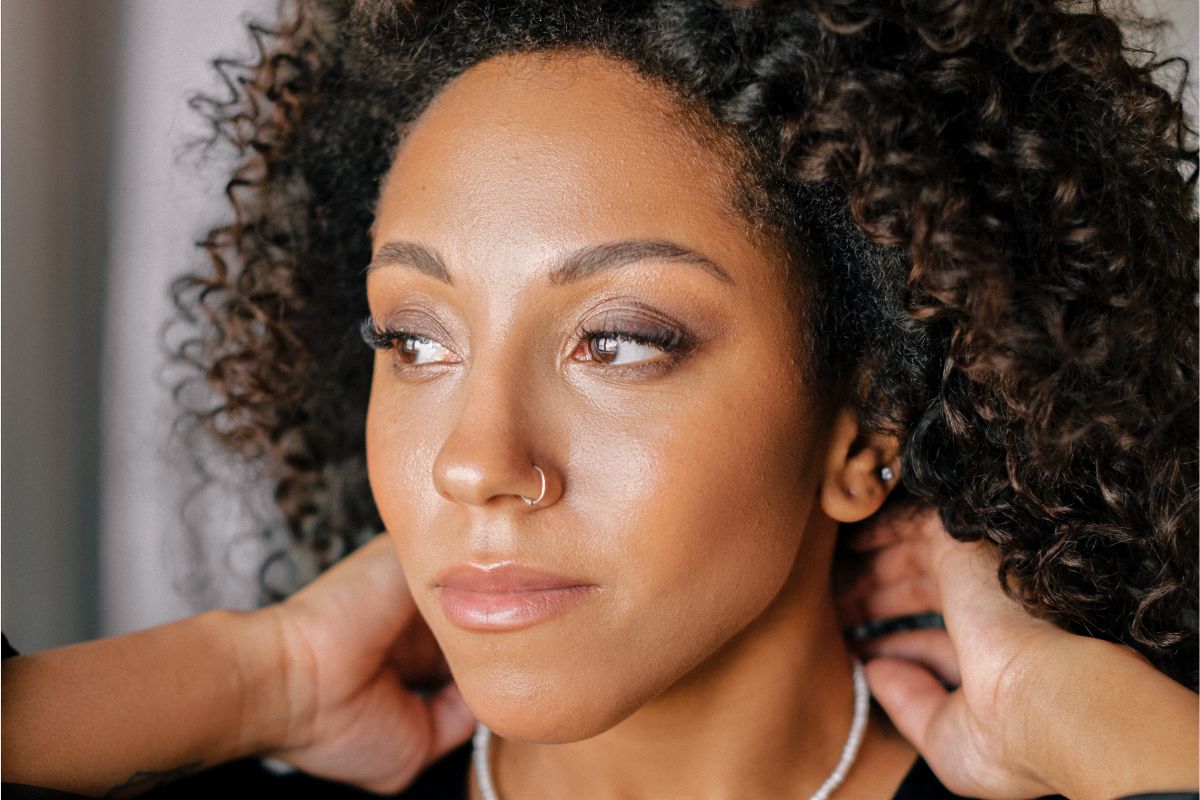Body piercings have now become more mainstream. They're just as in demand as body tattoos. Surveys reveal that in the U.S., sixty-one percent of adults have had their ears pierced. In addition, the most popular piercings in women are navel piercings, while nose piercings come second.
Everyone is more familiar with conventional ear piercings. Still, today, people have become a tad too experimental with their bodies that they've decided to accessorize their noses with jewelry pieces.
As a result, celebrities, Hollywood stars, artists, homemakers, professors, dentists, physicians, and entrepreneurs are going against the norm by advocating their freedom to express themselves through body art.
If you're not afraid to use your body as a canvas and ornament it any means you want, then you may want to consider nose piercings. Many people are piercing all parts of their bodies, from ear lobes to belly buttons, so why not the nose?
Also, with the plethora of nose rings to choose from, it can be tempting to try them all out. Some jewelry pieces designed for nose piercings include captive bead rings, curved barbells, circular barbells, nose bone, and nose studs.
Everything looks pretty and fancy when suddenly you notice a red bump on your nose piercing. You sleep it off and hope that it will be gone tomorrow but low and behold, and it's still there.
So you wait again for another day and hold a handheld mirror to your face, and much to your horror, a glaring red bump is staring right back at you. How can you get rid of it? Is there a way to remove the unsightly red raised bump on your nose?

Why Is There a Bump on Your Nose?
After getting your nose pierced, it's normal to experience some bruising, bleeding, redness, and swelling for a couple of weeks. As the site heals, you will experience itchiness on the area, white pus that oozes out from the site, and a crust that forms around your nose piercing.
Doctors say it would take around six months for your nose piercing to heal completely. However, if the symptoms are getting worse or if you notice a bump that has formed on the site, you should notify your piercer. A lump could signify a problem.
What Causes the Bump to Form?
If your piercer used sterilized equipment and if you strictly followed your piercer's aftercare instructions, you shouldn't worry about your nose piercing that much. It should heal well in several months.
A bump on the piercing site can be due to the following:
- tissue damage can occur if you removed the piercing way too early
- an infection could take place if the environment where the piercing took place is unsanitary
- you develop an allergic reaction to the nose ring
- fluid gets trapped on the site of the piercing, and it forms into a bump or lump
- you develop a keloid or raised scar (keloids look darker than the rest of your skin)
- a granuloma or an inflamed tissue that looks like a bump
Other factors contribute to the formation of a red bump on your nose, such as:
- incorrect piercing technique
- when you keep touching your piercing with your unclean hands
- applying the wrong cleaning products
It can be tempting to drain the pus and scrape away the crust, thinking it would solve the problem. Still, it will only do more damage by making the symptoms worse and predisposing you to scars. With the proper treatment, it should clear up.
When Should You Get Help?
Minor swelling and redness are normal, but you should be extra careful and look for signs of severe infection. How do you know if your piercing is infected?
First, check the pain level. It's normal to feel slight discomfort after the piercing, but if the level of pain escalates over time and if it burns or throbs around the site, you should give your doctor a call.
Another thing to look out for is unusual tenderness at the site. In addition, check the site from time to time if it reeks of an unpleasant smell or if yellowish or greenish pus oozes from out of it; you need to call a doctor.
Do not remove your jewelry when you experience any of these symptoms because you may aggravate the infection. Taking your jewelry out will also cause the piercing to close.
You wouldn't want this to happen because the bacteria in the infection will only get trapped inside, leading to a more severe form of infection.
What If I Don't Have Signs of Severe Infection?
Consider yourself lucky if you don't encounter any problems with your nose piercing. But if you do exhibit minor symptoms, you may do the following to help get rid of the bump.
#1 Replace Your Jewelry
One of the reasons why people develop a bump is because of an allergic reaction. For example, you may be allergic to metal. For example, suppose you are allergic to nickel. In that case, you may experience severe itchiness, thickened skin, blistering and redness, and skin discoloration.
The ideal solution to this problem is to replace your metal jewelry with a hypoallergenic stud or ring. If you're one of those people whose skin is extra sensitive to nickel. In that case, you may want to replace your jewelry with niobium, titanium, stainless steel, or jewelry made from 18 or 24 karat gold.
Be careful not to replace your jewelry right away, especially if the piercing is less than six months old. If you attempt to remove it by yourself, there is a tendency that you'll cause the tissues of your nose to tear. Instead, the best method of removing your nose jewelry is to let your piercer do it.
If the piercing is more than six months, you can do it independently if you're confident and comfortable. If not, you can ask your piercer for help.
#2 Cleanse the Site with Sea Salt Soak
Before cleaning the site, ensure that you wash your hands first using liquid soap and lukewarm water. Dry your hands with a clean, dry towel. If your piercer recommends a certain kind of soap, you may use that. Next, clean the area using a salt solution. To make the salt solution, combine one-fourth teaspoon of non-iodized sea salt with one cup of warm water.
Get a piece of paper towel and soak it in the salt solution. Next, take the saturated towel and put it over your piercing for approximately five to ten minutes. The warmth of the compress will soften the tough crust. You may experience a slight sting as the towel touches your skin.
If the towel loses its warmth, you can reapply it again every two minutes. After you've applied the warm sea salt compress, get a clean Q-tip and dip it in the salt mixture to remove some of the discharge or crust around the piercing.
You can also soak a new towel and squeeze some of the liquid to rinse the site. To dry, don't rub it. Instead, just simply dab it with a clean paper towel. You can repeat the entire process at least two to three times a day.
#3 Try a Chamomile Compress
Did you know that chamomile contains properties that promote faster wound healing? That's because the compounds present in chamomile help stimulate skin tissue regeneration.
You may use sea salt solution and alternate it with chamomile compress. How do you make chamomile compress? It's pretty easy. Here are the steps.
First, you need to buy a chamomile tea bag. Then, soak it in a cup of boiling water, just like when you're making tea.
Allow the tea bag to steep for about three to five minutes. Next, get a piece of clean paper towel and soak it in the chamomile solution. Then, apply the soaked paper towel to the piercing for five to ten minutes.
To keep the towel warm, you should soak it repeatedly and reapply on the site every two minutes. A word of warning, if you are allergic to ragweed, using a chamomile compress is not advisable.
#4 Add Diluted Tea Tree Essential Oil
Tea tree essential oil is popular in treating nose bumps because of its antimicrobial, antiseptic, and antifungal properties. For years, tea tree essential oil has long been used to dehydrate a nose bump. It also protects you against infection, minimizes inflammation, and promotes faster healing.
But be careful because sometimes tea tree oil can also trigger a reaction. If it's your first time using tea tree essential oil, make sure you do a patch test first. It's not advisable to apply anything on an open wound unless you've done a patch test to prevent allergic reactions.
How do you do a patch test? Easy! First, you need to add a few drops of the diluted tea tree oil into your forearm. Don't wipe it off, and don't rinse it. Leave it alone for twenty-four hours.
The next step is to wait. If you don't develop inflammation or irritation, you're not likely to react to the essential oil once it's placed on your piercing.
How do you make a tea tree oil solution? All you need is to add a few drops of tea tree essential oil (approximately two to four drops) to a carrier oil (about twelve drops).
The carrier oil can be almond, coconut, or olive oil. The twelve drops of carrier oil should be enough to dilute the tea tree oil, making it safe to use on your piercing. It's normal to feel a little sting once applied.
#5 Clean the Piercing Site Three Times a Day
If you're hellbent on getting a nose piercing, you should be just as determined to clean your piercing two to three times a day to ensure that it doesn't get infected. Your piercer will give you aftercare instructions make sure you follow all of them.
Before cleaning the site, ensure that you've already washed your hands with soap and water. Dry your hands thoroughly.
Next, use a recommended cleaning solution. If you wind up using the wrong cleaning product, you could predispose your wound to a potential infection. You can ask your piercer for recommendations.
As much as possible, avoid products that contain chlorhexidine, iodopovidone, hydrogen peroxide, and isopropyl alcohol. It's important not to remove any crust that has formed around your nose piercing.
Allow it to flake off on its own. Don't play around with your stud jewelry even when the wound is dry. Do not apply any ointments on the area as this will impede air circulation.
During the first six months following your piercing, you should clean the site every single day. However, don't be too confident. Even if the piercing looks dry and healed from the outside, the inside tissues may not have recovered yet.

Takeaway
If you notice a bump in your piercing site, quickly assess the bump. Is it painful? Is there pus oozing out of it? If the symptoms worsen as time passes, the safest move is to let your piercer know about it. In addition, you can avoid nose piercing bumps if you use the right cleaning product and if you discipline yourself to clean the site daily.
Are You Looking for Effective Nose Piercing Swabs?
Finding the perfect product can be challenging, but you don't have to dig deep. We've got a solution for you. If you're looking for an effective and safe product to clean your piercings with, Dr. Piercing Aftercare can help.
At Dr. Piercing Aftercare, we've developed convenient medicated swabs that you can use to clean your piercings and keep infection away. We are proud of our products. They are made and tested in a cGMP compliant and FDA-registered facility in America.
We use advanced technology on our swabs for easy application. Each pack contains thirty-six medicated swabs that are proven and tested to promote your body's natural healing process while preventing infection. Contact us today, or check out our website if you want to learn more about our products.






